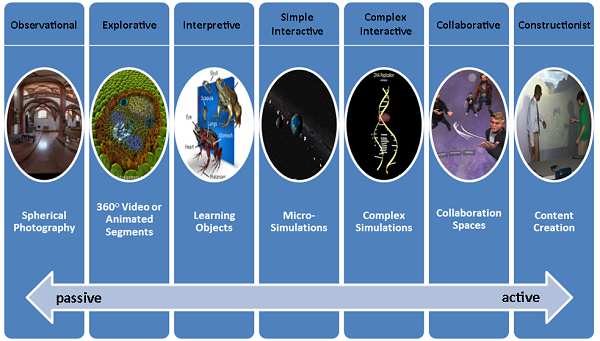Quick Search: Research is a series dedicated to unpacking some of the emerging research on 3D, VR, and other dynamic visualization technologies. See my introductory discussion on this topic, entitled the Research Chase. In the first article in this month’s new series, I highlight some recent research by Fernanda Herrera, a Stanford University PhD candidate, who recently presented at SXSWedu in Austin.
Tucked away in the recesses of SXSWedu, I found myself in a delightful summit, “From Information to Experience: AR/MR/VR”, conducted by three experts on visualization in education. David Oh, Head of Developer Relations with Meta, the augmented reality glasses manufacturer; Cecelia Waismann, the Vice President of R&D with MindCET, and Fernanda Herrera, a PhD candidate out of Stanford University each offered substantially different breakouts. The speaker and the breakout session that by far drew the most interest involved Fernanda Herrera. In her breakout, Herrera spotlighted the use of VR in education, highlighting several well-accepted benefits of employing VR, based on extant research:
- learning physical tasks
- enabling presence and social presence
- providing interactivity
Learning physical tasks. First Herrera documented the knack of virtual reality to aid with mastering physical tasks, such as flight simulation, medical training, and even Tai Chi. Herrera explained: “People who try to learn physical tasks—let’s say Tai Chi, for example—via VR versus just having to read about it or see videos about it, are better able to perform the task.” “The VR users can also perform those tasks faster or better than their video or reading only counterparts”, she added.
Enabling presence and social presence. Herrera reminded attendees that both presence and social presence are indeed important in learning. This was especially true with sharing an environment with someone else. “People who had high levels of presence and social presence told us they liked the experience more”, she clarified. “And people who learned via VR with someone else performed better, paid more attention, and learned more than those who learned without VR than those who learned with a computer or an agent.” (An agent is an avatar controlled by the computer.) According to Herrera, social presence is key.
Providing interactivity. According to Herrera, Interactivity within the educational VR experience really counts for something. “The more an experience is interactive, the more students feel agency, the [sense of being] in control.” She explains: “the more students personalize the experience and are able to determine what they need to do to get the most out of that experience, then they feel their actions matter more.” She continues: “[Therefore] they pay more attention, and are more likely to finish that experience, and are more likely to come back for more of the same type of experience in the future.”
[Author’s interruption: It’s interesting to note that in my taxonomy for VR content (see my previous article, Towards Better Educational VR Content) collaborative VR (enabling social presence) is desperately lacking in current educational offerings. And so are more interactive VR micro-simulations and complex simulations. See chart below.]

Herrera concluded, “We know a little bit about VR as a learning tool”, while quickly moving on to another question: “But what if we could teach people about social issues so that they could not only learn facts, but they could also learn how to be more empathetic, to see things from another person’s point view?” Stay tuned for part 2 of this short series, as we take a closer look at the capacity of virtual reality to enable empathy and prosocial behaviors. –Len Scrogan



